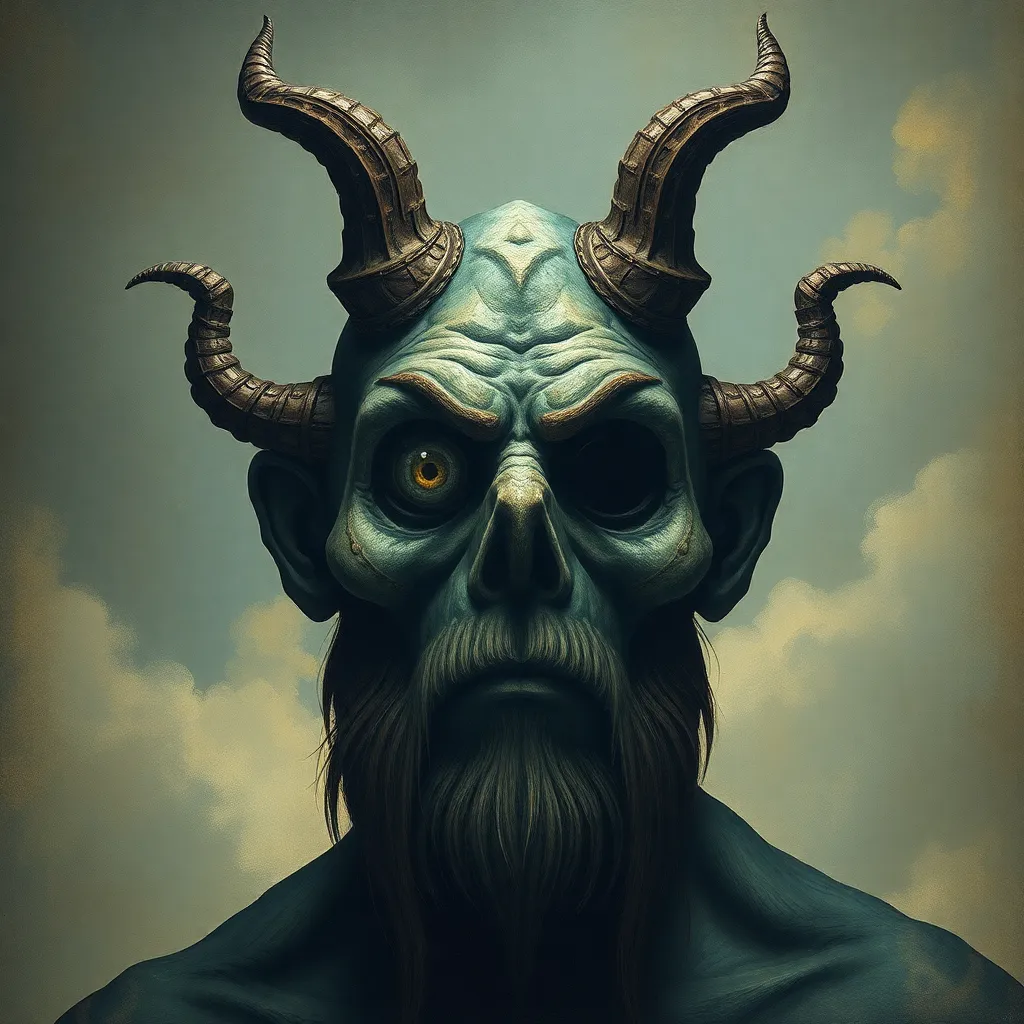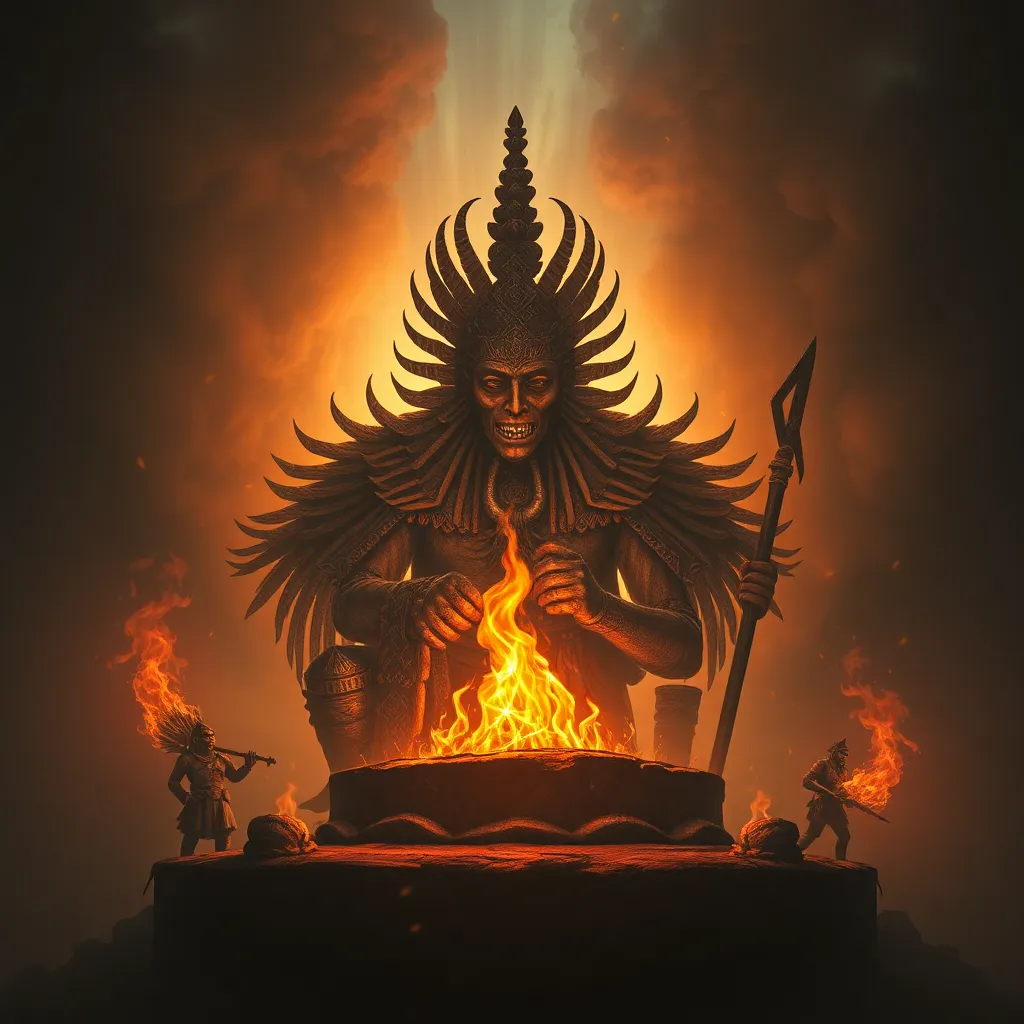The Cyclops in Norse Art: Examining the Depiction of the One-Eyed Giant in Norse Artwork
I. Introduction
The Cyclops, a formidable creature from mythology, has captivated imaginations across cultures. Known for their singular eye and immense strength, these one-eyed giants often embody themes of chaos and power. In the context of Norse mythology, the Cyclops offers a unique perspective on the interplay between humanity and the divine, fear and strength.
Norse art plays a critical role in representing mythological figures and narratives, serving as a visual archive of cultural beliefs and practices during the Viking Age. This article aims to explore the portrayal of the Cyclops in Norse artwork, examining how these depictions reflect broader themes within Norse mythology and culture.
II. Historical Context of Norse Art
The Viking Age, spanning from the late 8th century to the 11th century, marked a period of significant cultural and artistic development among Norse societies. This era was characterized by a rich tapestry of exploration, trade, and conquests, which influenced the artistic expressions of the time.
Common themes in Norse art include:
- Nature and the elements
- Mythological figures and deities
- Warriors and heroism
- Animals and intricate knotwork designs
Mythology served as a cornerstone for artistic expression, with many artworks reflecting the tales of gods, giants, and other legendary beings. The depiction of the Cyclops in Norse art is an extension of this mythological rich tradition, highlighting the complexities of the human experience as mirrored by these fantastical creatures.
III. The Cyclops in Norse Mythology
In Norse mythology, the Cyclops is often associated with chaos and brute strength. The origins of the Cyclops can be traced back to ancient legends, where they were frequently portrayed as solitary beings living on the fringes of civilization.
When comparing the Norse Cyclops with Cyclopes from other cultures, particularly Greek mythology, there are notable differences. Greek Cyclopes, such as Polyphemus, are often depicted as shepherds and are associated with pastoral life, while Norse representations lean more towards the chaotic and the monstrous.
Several notable stories reference the Cyclops in Norse texts, including:
- The tale of the Cyclopes forging weapons for the gods
- Encounters between gods and Cyclopes that highlight themes of conflict
IV. Artistic Representations of the Cyclops
Specific artifacts and artistic pieces depicting Cyclopean imagery provide insight into how these figures were viewed in Norse culture. Items such as:
- Wooden carvings
- Stone reliefs
- Textiles and tapestries
exhibit varying stylistic elements that reflect the characteristics of the Cyclops. The use of bold lines, exaggerated features, and symbolic motifs contribute to the portrayal of the Cyclops as a powerful and fearsome entity.
Symbolism plays a significant role in these artworks, with the one-eyed giant often representing the duality of strength and vulnerability. The Cyclops’ solitary eye may symbolize a singular focus or a narrow perspective, reflecting themes of isolation and the dangers of unchecked power.
V. Thematic Interpretations of the Cyclops in Norse Art
Exploring the themes associated with the Cyclops in Norse art reveals deeper cultural meanings. Key themes include:
- Isolation: The Cyclops often represents the lone figure, disconnected from society.
- Strength: The Cyclops embodies brute force, often seen as a formidable opponent to the gods.
- Fear: The presence of the Cyclops in narratives evokes a sense of danger and unpredictability.
In the broader context of Norse heroism, the Cyclops serves as an antagonist, challenging heroes and gods alike. This dynamic reinforces the narrative of the struggle between order and chaos, a central theme in Norse mythology.
VI. Case Studies: Notable Examples of Cyclops in Norse Art
Several significant pieces of art provide a window into the depiction of the Cyclops in Norse culture. For example:
- The Oseberg Ship Burial: Discoveries from this burial included intricate carvings that hint at the presence of Cyclopean beings.
- Runestones: Certain runestones depict scenes involving Cyclopes, illustrating their role in mythological narratives.
- Tapestries: Textiles from the Viking Age often include imagery of mythological figures, including one-eyed giants.
These artworks are significant as they provide insight into the cultural understanding of the Cyclops, showcasing the artistic techniques and cultural influences that shaped their creation.
VII. The Legacy of the Cyclops in Norse Art
The depiction of the Cyclops has evolved over time, reflecting changes in cultural attitudes and artistic practices. In modern interpretations of Norse mythology, the Cyclops remains a prominent figure, often reimagined in literature, film, and art.
Contemporary artists continue to draw inspiration from these ancient myths, incorporating Cyclopean imagery into their works, which demonstrates the enduring impact of these mythological figures on cultural expressions.
VIII. Conclusion
In summary, the portrayal of the Cyclops in Norse art offers a fascinating glimpse into the complexities of mythology and cultural expression. Through various artistic representations, the Cyclops emerges as a symbol of strength, chaos, and isolation, reflecting broader themes within Norse culture.
The enduring impact of mythological figures, such as the Cyclops, underscores the significance of studying Norse art and mythology today. By understanding these ancient narratives and their artistic expressions, we gain valuable insights into the human experience and the timeless themes that resonate across cultures and generations.



